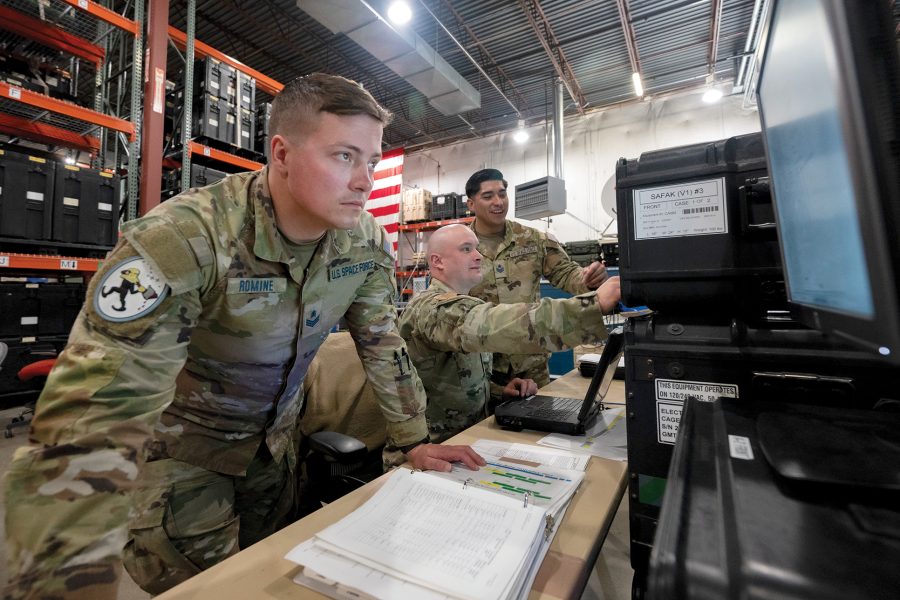NATIONAL HARBOR, Md.—In a push to make testing and training more realistic, Chief of Space Operations Gen. Chance Saltzman said he wants to put live aggressor satellites in orbit to mimic adversary tactics.
The concept is comparable to the Air Force’s practice of using aggressor or “red air” platforms to train pilots; in this case, an operator acting as the enemy would be operating a real satellite as a training asset. Saltzman told reporters Sept. 23 at AFA’s Air, Space, and Cyber Conference that it’s part of the service’s vision to improve its Operational Test and Training Infrastructure.
“There’s nothing like propagating [radio frequency] through the atmosphere, out to orbit and tracking satellites,” he said. “It has to happen for real.”
The Space Force today leans heavily on virtual and simulated test and training infrastructure, in part because of cost and security concerns that come with sending extra satellites to orbit to train in an environment where they could be detected by enemy systems. While its sister services can establish secure, remote, live ranges on the ground, the Space Force can’t stake a claim to a portion of their domain due to restrictions in the 1967 Outer Space Treaty.
USSF has live ranges on the ground for electronic warfare testing and training, and it plans to establish more live training venues for cyber as part of its future National Space Test and Training Complex. According to its NSTTC vision, drafted in 2022, the complex will consist of a network of interconnected physical and digital ranges.
The service is in the early phases of developing that infrastructure and asked for $141 million for the effort in its fiscal 2026 budget request.
While ground-based live and virtual ranges will make up the bulk of that infrastructure, the service also intends to create an orbital test and training range that would consist of live satellites in space, designated as training assets, that can communicate with ground systems. Officials have also discussed the possibility of staging “witness” satellites to observe test and training events and relay data from those observations back to the service.
Orbital range operations would consist of “exquisite, discrete demonstrations,” according to the NSTTC vision.
The Space Force hasn’t revealed its timeline for building out an in-space range, but Saltzman said the service is starting to think through a strategy for acquiring satellites to serve as dedicated test and training assets.
“In every orbital regime we fly satellites, some of those satellites should be test and training elements, just like in the air environment,” he said. “When you buy F-35s, some of the F-35s you buy are for test and training. Same with us. When we buy satellites, when we build a constellation, we want to have satellites that are available for test and training.”
The USSF’s shift toward proliferated constellations made up of smaller, low-cost spacecraft could put that approach within reach, the service’s acting acquisition executive Maj. Gen. Stephen Purdy told reporters Sept. 24.
“As we proliferate out, we’re hoping to get extra proliferated elements to go up,” he said.
Asked when the Space Force may start budgeting for those additional spacecraft in its acquisition strategy, Purdy said the timeline is “TBD.”


